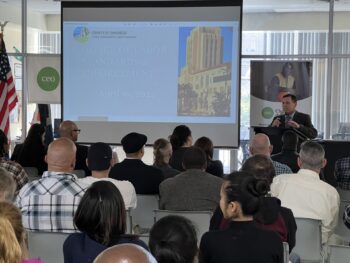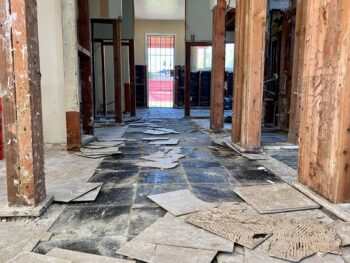Juvenile crime rates in San Diego County are at the lowest point in decades, and juvenile arrests have dropped by 50 percent. Those figures translate into fewer crime victims and fewer teenagers on the road to delinquency.
County officials delivered those highlights to the Board of Supervisors Tuesday in an update on juvenile justice services that included a look at successful programs contributing to the downward trend. The board also voted to continue funding for various juvenile crime prevention and diversion programs.
The number of juveniles in custody has been cut in half from about 842 average daily population in 2009 to just 438 average daily population through August this year, said Ron Lane, General Manager of the County’s Public Safety Group. He explained that this is all part of the group’s Comprehensive Strategy for Youth Family and the Community, which was adopted in 1998 and involves the County’s District Attorney, Sheriff, Probation, Child Welfare Services and Behavioral Health together with schools, local police and community-based organizations.
Lane told the board that keeping youth out of custody is a clear priority for the justice partners, as is meeting the complex needs of the youth who are in custody and on probation.
RELATED: Probation Gets Grant to Expand Juvenile Diversion Program
RELATED: Program Brings Victims, Offenders Face to Face
As part of the system, partners take action at the first sign of trouble such as truancy, curfew violations, or early drug use, connecting youth to prevention or diversion programs to divert them from ever entering the juvenile justice system. Those youth who have committed more serious crimes are referred to alternative detention programs if appropriate and mental health services that can help them turn their lives around.
Deputy Chief Probation Officer Lorraine Fernandez explained that in the cases where delinquent behavior escalates, it is usually due to past or ongoing trauma that affects a child’s development, emotional vulnerability, resiliency and outlook. She referred to a recent SANDAG report produced in collaboration with Probation in which results were based on interviews with 40 repeat juvenile offenders in the probation system.
“Seventy-five percent of these youth had seen someone attacked with a weapon, and one in three had been attacked at some point themselves,” said Fernandez. “One in three had seen someone killed,” said Fernandez. “Forty-two percent had a family member who had been to prison, and 75 percent had a child welfare referral at some point during their childhood.
“Trauma is strongly linked with future mental health and life troubles and unhealthy thinking, bad choices and negative family dynamics are often the norm with these youth but proven therapies can help traumatized youth and their families change and try to find a positive way forward,” said Fernandez.
Public Defender Henry Coker said what the various prevention and diversion programs have in common is youth get intensive and tailored services to help them turn their lives around.
RELATED: Probation Pilots Juvenile Justice System Transformation
RELATED: Celebrating Sobriety – Juvenile Drug Court Graduation
RELATED: Digging Deep
Tuesday’s update was requested by the Board of Supervisors, who in April adopted the recommendations of Supervisors Greg Cox and Ron Roberts directing County staff to review the County’s spectrum of juvenile justice services and determine priority funding areas to continue the decrease in youth crime.
The Board also on Tuesday voted to expand contracts for a new program called “Alternatives to Detention” that keeps kids who were involved in low crimes or family turmoil out of juvenile hall, instead providing intensive family services and case management in the community.
The program, which was successful in a three-year pilot in the South Bay and Central San Diego County, will soon reach the whole region. The program’s emphasis on connecting kids with services outside of custody aligns with the County’s strategy to connect most kids to help and guidance outside the formal justice system.
Funding is also in the County’s current budget to expand community-based diversion and prevention programs which provide intensive case management. Money will also fund diversion and Alternatives to Detention protocol training for local law enforcement.
In addition, the County will expand mental health screenings, assessments and services for all youth both in custody and on probation, and continue a collaborative court program for youth with mental health needs.





